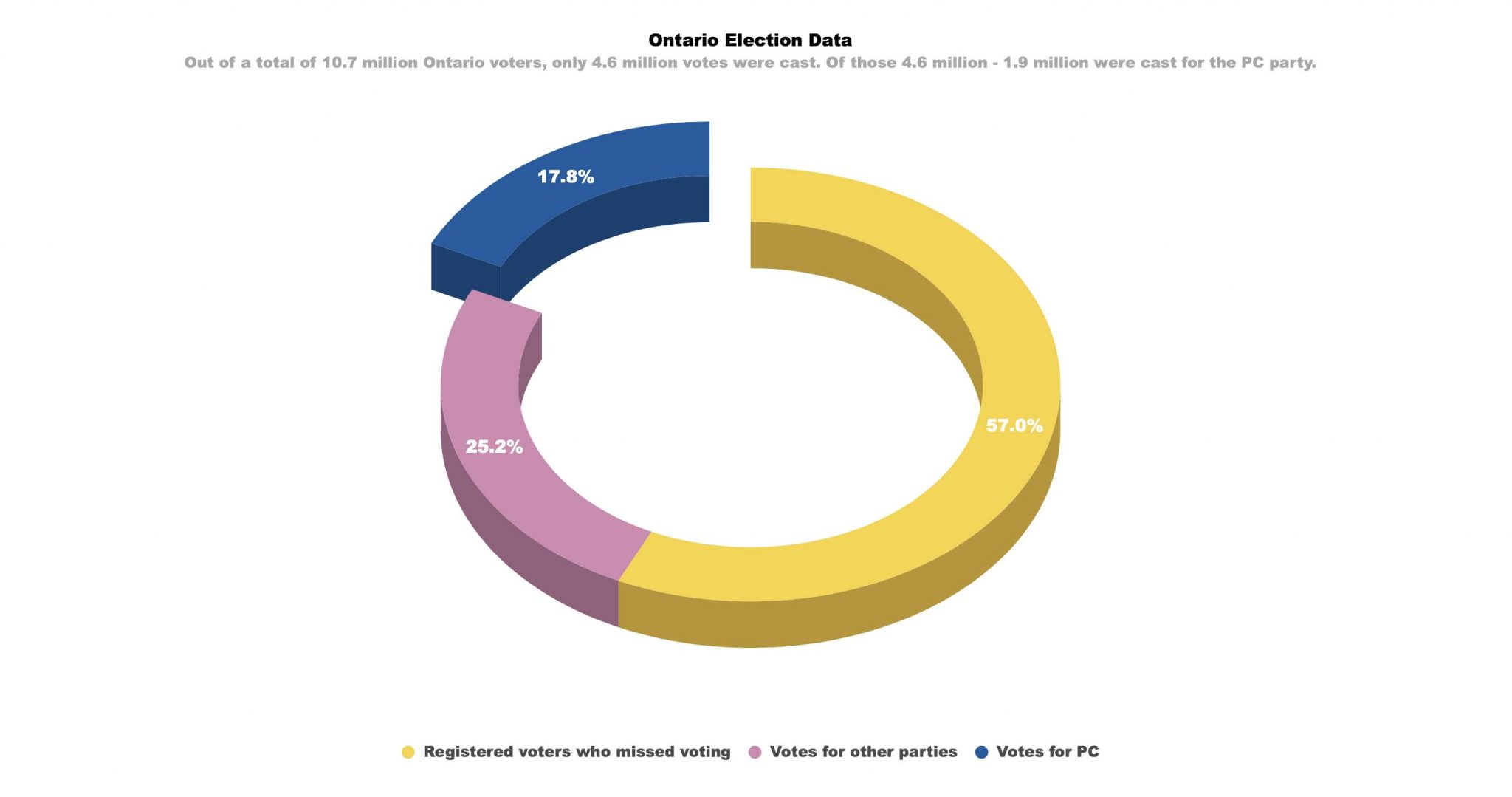Doug Ford was re-elected for a second term during the Ontario provincial elections on June 2.
Voter turnout for this election was the lowest it has been in history, with 43.5 per cent of eligible Ontarians casting a ballot. Andrea Perella, an associate professor at Wilfrid Laurier University, said voter turnout has steadily decreased over the last few decades.
“I think the long-term decline has a lot to do with overall malaise, which is a term that we use when we study voters and citizens, about this ill-feeling or an unhappiness…it is the foundation of unrest, instability, voter rage, and it starts off by withdrawal and by voters not being interested in politics,” Perella said.
Perrella said that the short-term reason for low voter turnout could be that voters are not happy and none of the parties seem appealing to them.
“The long-term reason is that voters, over a long period of time, felt that politics no longer respond to them, that life has become too much of a struggle and it doesn’t matter who’s in office, it doesn’t seem to change anything,” she said.
Although this withdrawal is a stage of voter discontent, voters do not always stay withdrawn. They can be activated out of anger to vote, or hope for change in a political party, or they can become mobilized towards a common cause. An example of this is the spike in voter turnout that happened in the 2018 election.
For the 2022 provincial election, the government was elected by under 20 per cent of the electorate, so it was formed by a small minority.
“There will still be those who look at these voters and say, ‘how do I get to them?’. They could be visionary to say, ‘how do I bring these voters back into the fold, back into the family? How do we mobilize and work as a team?’ Or they could be exploiting voters and saying ‘how do I appeal to their anxiety?’” Perella said.
“We’re kind of at a fork in the road where the voters can be swayed by the dark forces or by hope.”
Another implication of low voter turnout is that voters do not see themselves represented in the government.
“When there’s this disconnect[ion] between those in power and us, then we may begin to feel a little alienated,” Perrella said.
If the policies that the government puts forward do not align with people’s interests, then it can further exacerbate the sentiment of disconnect which can aggravate any simmering discontent that there is in the citizenry.
As a way to increase voter turnout, people in the media have called for a voting mandate for eligible residents, which can be a difficult thing to enforce and uphold.
“If you’re going to make voting mandatory…I think you need to make the teaching of civics better. If you’re going to draft people into engaging in an activity, you have to train them,” Perrella said.
“Most people do not yet have enough of a grasp, and it’s not their fault. It’s the fault that we haven’t done enough to educate the public about how the political system works.”
In the future, local representatives and elected officials need to further engage with the community to increase political engagement and encourage voter turnout in the province.
“There should be more opportunities to engage with them… I think one solution is to narrow the gap between the government and the citizens,” Perrella said. “I think governance needs to be closer to the people and I think the people need to feel a little bit more empowered.”
Elected officials can begin the process of empowering their constituents by listening to them and by being more present in the community.




Leave a Reply